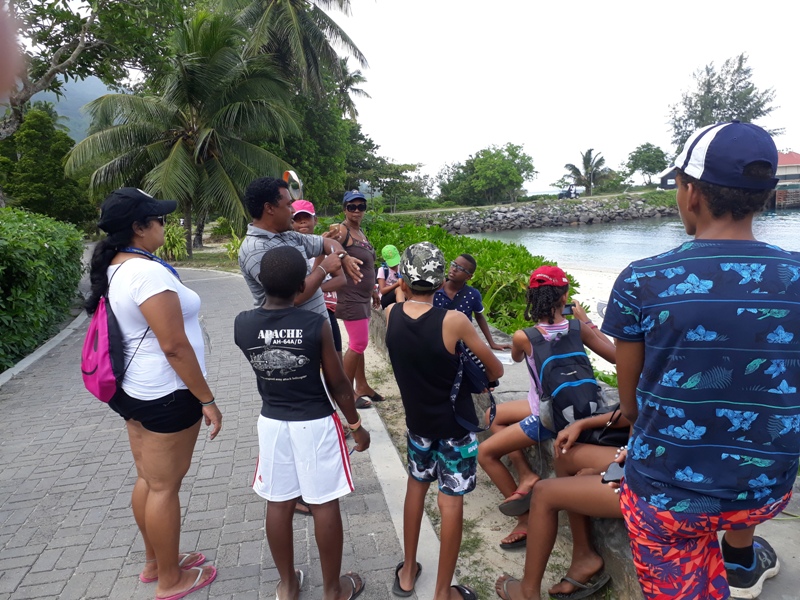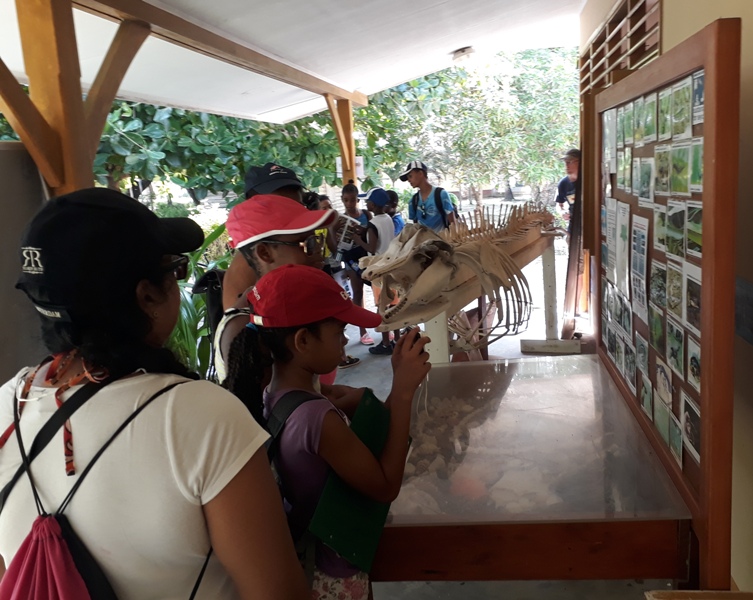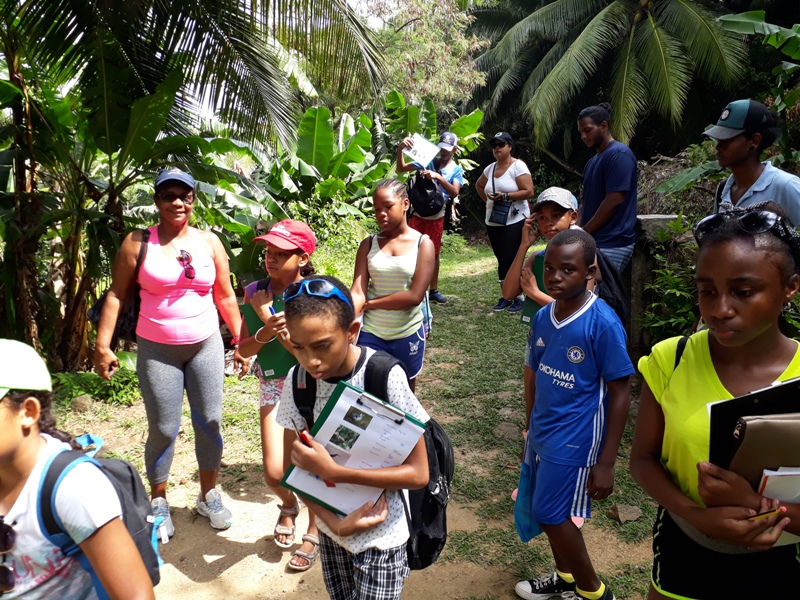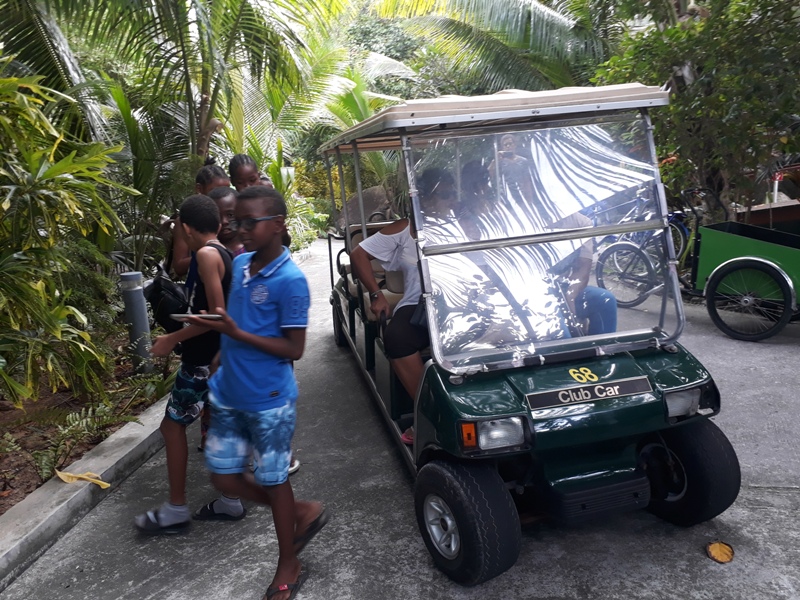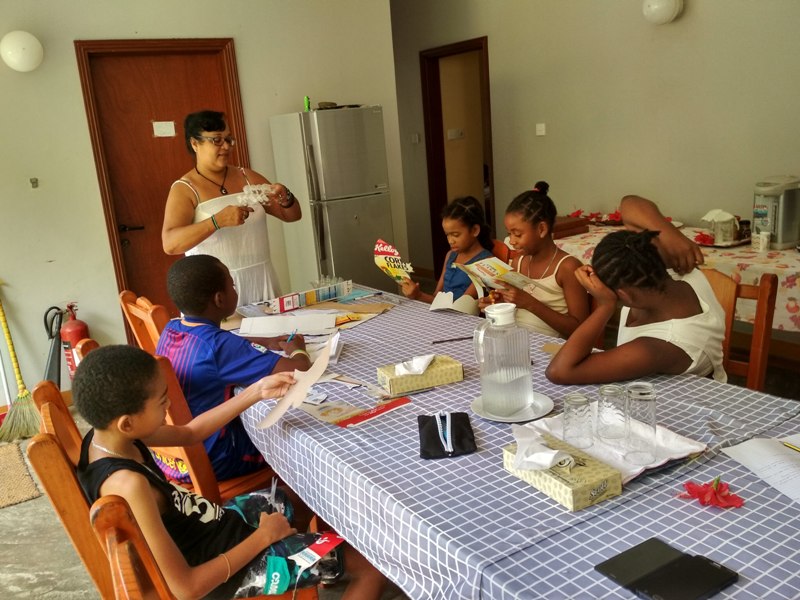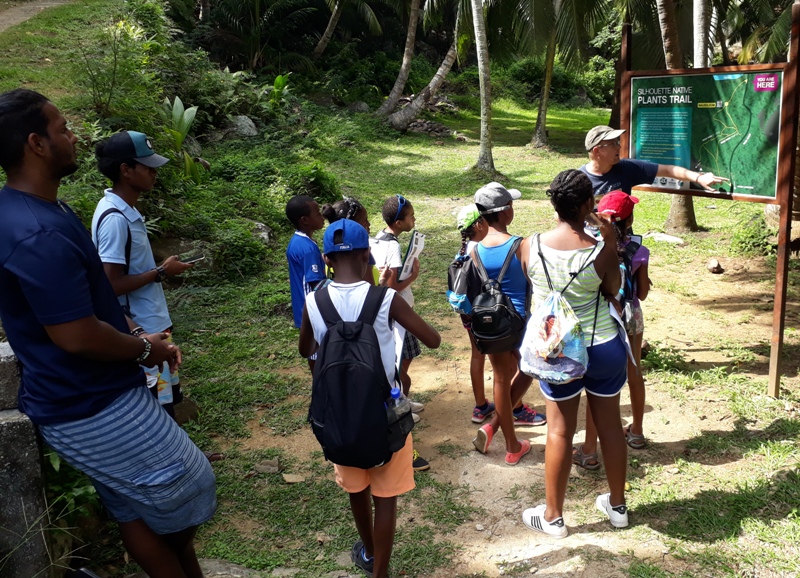Eco-Schools trips to Silhouette island |24 February 2018
The following article was written by a group of students from state and private schools who were acting as young journalists during the Eco-Schools trips on Silhouette island, from January 9 – 11 and from January 16 – 18, 2018. This article has also considered the experiences of other students who were present on the expedition.
Day 1
It was a Tuesday morning when a group of students from different Eco-schools embarked on the ferry to Silhouette. For some of them it was their first trip to Silhouette and on our way the sea was a little bit rough. The ferry kept going up and down and this made the rest of our peers scared. We tried to comfort each other until we slowly approached the island. On arrival we were warmly welcomed on the island by the IDC (Islands Development Company) and ICS (Island Conservation Society) staff. We walked to the guest house which took us around five minutes from the jetty and started to take pictures of the surrounding environment which was observed to be well managed. When we arrived at the guest house we interacted with the island manager and his assistant. This was followed by a debriefing session by the person in charge of this trip. For most of us it was our first time on Silhouette island and we all looked forward to the visits. We managed to see some of the old infrastructure still intact and saw various facilities at the disposition of the inhabitants. We saw the Silhouette primary school no longer operational but partly occupied by ICS staff for research and sessions. In the afternoon we spent some time at the beach and completed some hands on activities - it was fun! In the evening we started to brainstorm on presentations for the cultural soiree for the following day and then headed off to bed.
Day 2
At 7am we all woke up and did some morning exercises and got ready for our exciting whole day session with the ICS staff. The session was lively and interactive. We managed to learn more about the conservation projects on the island and learned that there is a small population of the endemic sheath tailed bat on the island. We did not know that the bats actually use echolocation to form an accurate 3D picture of their surroundings, which was interesting to note. Apart from that, we managed to conduct field visits to several protected sites especially the breeding area for the Seychelles Kestrel and the Sheath tailed bat. On the trails past the Dauban Mausoleum, we learned the names of several native and endemic plants species and their value to us and nature.
We kept on walking towards the bay facing Mahé island and saw lava and granite rock formation along the shoreline of more than two beaches. It was something new to most of the primary school students but the secondary school students and our tour guides were able to explain this bizarre rock creation which cannot be seen on other islands of Seychelles.
We even saw hawksbill turtle tracks and learned how the ICS team usually conduct turtle monitoring and record observations.
We kept on walking until we came across a natural stream which provided refreshing pure mountain water to satisfy our thirst and cool our body temperature.
After observing a wetland habitat hidden behind a large area of coastal vegetation, we headed back to camp.
We had some time to share what we had observed and learnt during the day and then had some free time to rest and prepare for the cultural soiree.
At night we walked for around 30 minutes from the camp hoping to observe the endemic bats fly out of their roost but did not find a single one. We were so disappointed, especially after most of us wanted to see the animal put on an open air flying spectacle.
We rushed back to the camp in preparation for the cultural soiree in the Silhouette community centre.
It was a memorable evening, we were all proud of what we managed to put together for the inhabitants on the island in only one day. Poems, songs, dance, role-play and storytelling were some of the presentations for that evening, which were all loudly applauded. To wrap up the evening we all stood in a circle and danced to a few Creole songs.
Day 3
This was our last day on the island. We just could not believe that the days would go by fast and in a couple of hours we would be going back home. Some of us did not even want to go back because there was still a lot we could do but we were comforted by the adults present with us.
In the morning, we played some games and went to the children’s playground for some recreational time.
We then left for a guided tour at the Hilton Labriz Silhouette hotel, thanks to our teachers, the island manager and the management team of the hotel. We just could not believe how beautiful the hotel was. We were amazed by its design and facilities – which blend in well with the existing environment. As much as we would prefer to visit the villas and be offered a complementary night stay, we learned that all rooms were fully occupied.
Heading back to the camp, we had a few more hours to pack and then head to the beach to go swimming.
At around 4.45 pm, we boarded the ferry and waved goodbye to the IDC and ICS staff.
This trip was so far one the best trips to be cherished and valued. Most of our peers expressed how proud they are of IDC and ICS working together to manage the island. However, we thought it would have been better if we could secure attachments to some of the employees on the island. We also thought it would be best to expand the facilities for more guests to visit the island because we will surely now tell all of our families and friends to spend their next holiday there.
The next Eco-School trip will be to Aldabra and this will accommodate a group of students and teachers from six most outstanding Eco-Schools in Seychelles.
To learn more about the Seychelles’ Eco-Schools programme, please visit us at www.ecoschoolseychelles.com
Contributed by the Environmental Education Unit of the Ministry of Education and Human Resource Development
